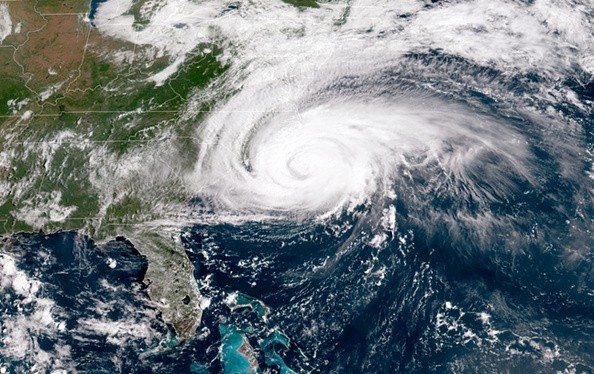Katrina, Harvey, and Sandy are all familiar names. Andrew, Hugo, and Agnes came before them. These are some of the most well-known storms ever to hit the United States. But how did we come to know them?
Of course, by their given names. While tropical storm development and destruction are as ancient as the oceans, the procedure of naming the natural creatures isn't.
The 2022 hurricane season will be the 75th anniversary of a named hurricane reaching American soil.
American Hurricane Timeline

The timeline of when storms were first given names is a muddled one. According to the National Hurricane Center (NHC), residents in the West Indies have been named storms for hundreds of years depending on "the particular Saint's Day on which the hurricane occurred," as the famed hurricanes Santa Ana in 1825, San Felipe in 1876, and San Felipe again in 1928 did.
But it wasn't until the 1947 Atlantic hurricane season, 75 years ago this year, that the Joint Army/Navy Phonetic Alphabet was used to classify tropical storms formally. The names, however, are not included in the NHC's Hurricane Databases since they were only used internally and were not published in public bulletins (HURDAT).
The National Hurricane Center doesn't even include the 1947 season on its website about tropical storm naming history.
Some believe the 1950 Atlantic hurricane season to be the first year hurricanes were given names, as it was the first year names appeared in public warnings. However, when internal use inside US services is considered, just one first designated US storm occurred in 1947.
Also Read : Fear, Uncertainty, and Doubt Against Global Warming Remain High Despite Pressing Evidence
Hurricane George
It was hurricane George. While most people are aware of the present military phonetic spelling alphabet - Alfa, Bravo, Charlie, Delta, and so on - the military phonetic alphabet used to designate storms during the first hurricane season in 1947 was somewhat different.
The United States of America was founded on this alphabet. In the 1947 season, the Air Force designated tropical storms. Tropical Storm Baker, Hurricane Charlie, and Hurricane Three preceded George (Dog-Easy). Because the Air Force mistakenly thought it was two independent storm systems, Hurricane Three was given two names from the phonetic alphabet.
While prior storms Baker and Dog-Easy both had modest effects on the United States, it wasn't until Hurricane Four, which was given the phonetic alphabet name George, that a named hurricane made landfall in the United States.
George's Journey
On September 2, George began its voyage into history as a tropical wave, swiftly growing into a tropical storm two days later. Just one day before it became a hurricane on September 5, Air Force meteorologists gave it the name George.
The fourth system of the season would proceed southwestward over the following four days. The hurricane turned northwest on September 9 and quickly grew, becoming a Category 4 hurricane with 145 mph winds near the Bahamas on September 15.
George's delayed passage over the Bahamas caused the storm to stall over Abaco Island for over 24 hours. It reached its strongest sustained winds, reaching 160 mph, and dumped more than 2 feet of rain there.
However, in 1947, meteorologists from the United States George were expected to recurve along the East Coast and hit northern Florida or southeastern Georgia, according to the Weather Bureau (later renamed the National Weather Service).
George killed 17 Floridians, although many more were saved by enhanced warning and preparedness procedures. The storm was far from over after its early effects on the Sunshine State's southern tip. The system weakened progressively to Category 2 status as it tracked through the peninsula. Still, the damage it caused in the regions of Fort Myers and Everglades City was far from minor.
By the morning of September 19, George had blasted into the Louisiana shore, passing over New Orleans' commercial center and releasing such strong gusts that the wind sensors at Moisant Airport had been damaged. George poured almost 2 feet of rain over Moisant Field, with storm surges reaching 11 feet in some places. The state had a total of 12 individuals dead.
Related Article : Exposure to Major Disasters Can Cause Long-Term Mental Health Problems
For more climate and weather updates, don't forget to follow Nature World News!
© 2025 NatureWorldNews.com All rights reserved. Do not reproduce without permission.





